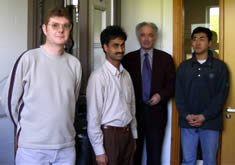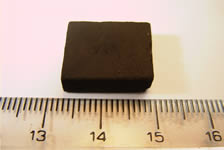A group of researchers in the University's Interdisciplinary Research Centre (IRC) in Superconductivity, including four members of the Engineering Department were the first to publish results that show that a newly discovered superconducting compound, MgB2, has considerable potential for fabrication in the form of wires, without losing its superconducting properties.


Dr David Cardwell explains: "The critical factor in these superconducting materials is not just the temperature at which they operate but the current density obtainable in bulk specimens or wires made from the materials. The problem with all the materials we have looked at up to now is that the grain boundaries, which are a natural feature of metallic materials, have always proved a barrier to the flow of current, so reducing the effectiveness of a superconductor that is larger than a single grain. Using a simple yet elegant experiment, we were one of the first groups world wide to demonstrate that the new material can be sintered, that is fabricated into a solid from powder, without reducing significantly its ability to carry current over relatively large length scales.
Our experiment proved conclusively that the grain boundaries in this compound are not weak links, and do not obstruct the flow of electric current. This means that MgB2 can be fabricated to form wires or any other shape required. Another bonus is that the compound itself is readily available commercially."
The importance of this experiment was reflected in the fact that the paper describing the results was published by the Institute of Physics within two days of receipt of the manuscript. This 'Rapid Communication' paper was also published on the web, and was downloaded over 300 times within the first two weeks.
Potential applications for superconducting materials include very powerful electromagnets, which can be used in magnetic resonance imaging equipment to give better resolution images as well as making the process cheaper to run. The use of superconducting wires also has the potential to provide more efficient energy transmission and storage, using frictionless bearings.
The full paper 'High intergranular critical currents in metallic MgB2 superconductor' M Kambara, N Hari Babu, E S Sadki, J R Cooper, H Minami, D A Cardwell, A M Campbell and I H Inoue, can be accessed here.

